 The Singaporean Navy 1963-today: 96 ships today: 18,000 personnel, 2 Submarines, 2 Frigates (+5 UC), 6 Corvettes (+3 UC), 10 OPVs, 19 FACs, 42 FIC, 4 Minesweepers, 2 Multi-role support ships, 2 Auxiliary ships, 3 TS, 1 Submarine rescue ship, 5 Hydrographic survey vessels, 18 UAVs (+12 Helicopters, 8 patrol planes).
The Singaporean Navy 1963-today: 96 ships today: 18,000 personnel, 2 Submarines, 2 Frigates (+5 UC), 6 Corvettes (+3 UC), 10 OPVs, 19 FACs, 42 FIC, 4 Minesweepers, 2 Multi-role support ships, 2 Auxiliary ships, 3 TS, 1 Submarine rescue ship, 5 Hydrographic survey vessels, 18 UAVs (+12 Helicopters, 8 patrol planes).
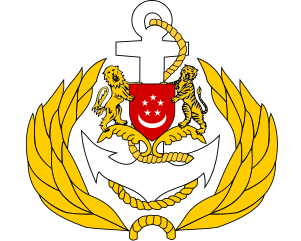 The Republic of Singapore Navy (RSN) as a service branch of the Singapore Armed Forces originated in the Royal Navy when Singapore was a crown colony. Its creation date was 1967, two years after Singapore’s independence from Malaysia, and it constantly grew in size and capabilities with a modernisation leading to one of the most potent navy in Southeast Asia, helped by its mastery of English and status of international hub and financial powerhouse with a population of 6 millions and a GDP of 880 billion for 735.6 km2.
The Republic of Singapore Navy (RSN) as a service branch of the Singapore Armed Forces originated in the Royal Navy when Singapore was a crown colony. Its creation date was 1967, two years after Singapore’s independence from Malaysia, and it constantly grew in size and capabilities with a modernisation leading to one of the most potent navy in Southeast Asia, helped by its mastery of English and status of international hub and financial powerhouse with a population of 6 millions and a GDP of 880 billion for 735.6 km2.
This is a Navy in which all cadres speak English, which facilitates international operations, not only of neighbouring countries but of great powers as well, the US, UK, Britain and Japan, and well experienced to combat piracy and terrorist threats in these littoral waters, notably the infamous Strait of Malacca vital for international trade in and out of the China Sea. Having no proper naval air branch, the Navy works with the RSAF to operate the G550 AEW and also the Fokker 50 MPA Fokker 50 maritime patrol aircraft for air surveillance of seaward approaches to Singapore, one of the planet’s busiest sea lanes. The Navy is also deeply engaged in international anti-piracy abroad, including in the Red Sea given its local experience, and notably is part since years to the multinational Combined Task Force 151 in the Gulf of Aden.
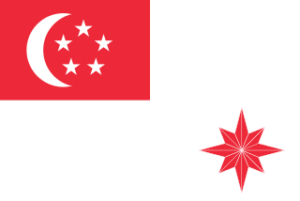 Of course the Singaporean Navy is not a powerhouse in tonnage or manpower but maintains a qualitative superiority, always embracing the latest tech and fostering local alliances as well as growingly using automation and unmanned systems. This made this fleet one of the most sophisticated and well trained in the whole region.
Of course the Singaporean Navy is not a powerhouse in tonnage or manpower but maintains a qualitative superiority, always embracing the latest tech and fostering local alliances as well as growingly using automation and unmanned systems. This made this fleet one of the most sophisticated and well trained in the whole region.
RSN ship uses the prefix RSS for “Republic of Singapore Ship” since the country is a Parliamentary republic, following the British example.
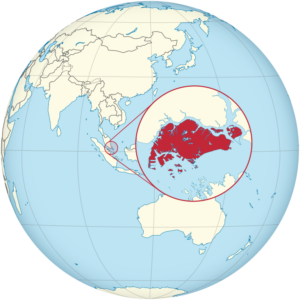 Founding PM Lee Kuan Yew which created the Navy, declared that its economy and defence policy were closely interlinked and that the country’s sea lanes needed to be protected and kept opened at all times, so maintaining a capable navy was paramount to meet this objective. Like Britain, Singapore is an island nation, and so its navy is considered its first line of defence and obtains the lion share in the armed forces budget.
Founding PM Lee Kuan Yew which created the Navy, declared that its economy and defence policy were closely interlinked and that the country’s sea lanes needed to be protected and kept opened at all times, so maintaining a capable navy was paramount to meet this objective. Like Britain, Singapore is an island nation, and so its navy is considered its first line of defence and obtains the lion share in the armed forces budget.
When founded, the Navy not only had to protect Singapore’s sealine of communications but also to contribute to regional peace and security, which underline the need to end piracy and later (it was not a thing then) to combat terrorism and arms smuggling to conflict zones in the region. The Navy needed to be ready to defend the country aagainst any aggression, but also in peacetime to be an auxiliary of its diplomacy, reinforcing international inter-state links through international operations for peace support, cooperation, and promote good will through humanitarian assistance and disaster relief.
The Navy’s Origin
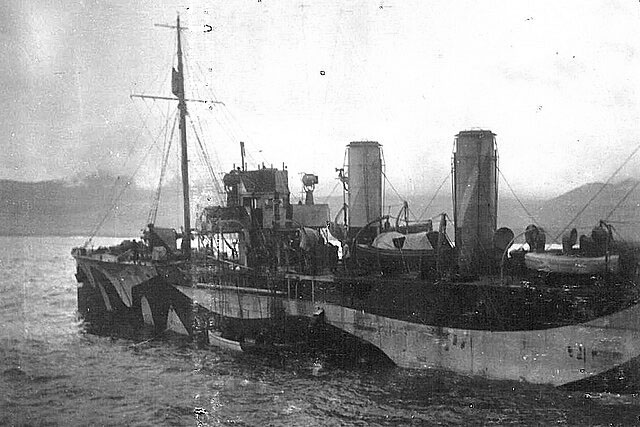
HMS Laburnum served in the SSRNVR until she was scuttled during the fall of Singapore in World War II.
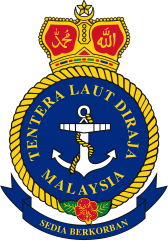 The Colonial and pre-independence era was preceded by a long period of independence as a Malay island known as Singapura (Sanskrit ‘lion city’), hence the ion is still a national symbol. Temasek around 1200 AD was a trading port under the influence of both the Majapahit Empire and the Siamese kingdoms, prosperous, merchant city-state ultimately solidified as the Kingdom of Singapura in 1299–1398. It was not a military powerhouse but was at least known for a cosmopolitan city and port of call for richly laden trade ships. The last king was defeated by a Javanese army and fell under the Malacca Sultanate. Beofre this, the port city was known by Portuguese traders as a point of exchange but producing nothing of its own apart taxation of transiting goods.
The Colonial and pre-independence era was preceded by a long period of independence as a Malay island known as Singapura (Sanskrit ‘lion city’), hence the ion is still a national symbol. Temasek around 1200 AD was a trading port under the influence of both the Majapahit Empire and the Siamese kingdoms, prosperous, merchant city-state ultimately solidified as the Kingdom of Singapura in 1299–1398. It was not a military powerhouse but was at least known for a cosmopolitan city and port of call for richly laden trade ships. The last king was defeated by a Javanese army and fell under the Malacca Sultanate. Beofre this, the port city was known by Portuguese traders as a point of exchange but producing nothing of its own apart taxation of transiting goods.
British Trade Post and Protectorate (1819)
Long story short when the British arrived in the island by 1819 it was ruled by Tengku Abdul Rahman, the Sultan of Johor, controlled by the Dutch and the Bugis. However internal dissentions were exploited by the British which eventually replaced the current power by another, Sultan Hussein, granting the British the right to establish a trading post on Singapore with the Treaty of Singaporesigned on 6 February 1819. The latter then offered protection of the RN. Thus, the island was developed as a local, strategic base for the RN as well over the years.
The Republic of Singapore Navy went back to the establishement of a small force under the patronage of the Royal Navy in the 1930s, featuring two patrol craft under the Straits Settlements Royal Naval Volunteer Reserve (SSRNVR) from 27 April 1934. In 1941 it became the Singaporean division of the Malayan Royal Naval Volunteer Reserve (MRNVR). In 1937, the SSRNVR was reinforced by several locally built 75 feet motor launches at John I. Thornycroft, Tanjong Rhu: HMS Pahlawan and HMS Panglima in 1937. In WW2 these vessels were all lost during the fall of Singapore in February 1942. The Singaporeans received a 90 ft motor vessel also named HMS Panglima, transferred after the liberation to the MRNVR in 1948. Ill-suited for tropical waters however, it was not serviceable for very long.
In 1948, the Malayan Force was raised by the Singaporean government and became the Royal Malayan Navy in 1952 after recoignition of its role during the Malayan Emergency. A new vessels named “Panglima” was thus launched in January 1956, to replace the second one, and was more technologically advanced than her predecessors, being a part of the local fleet. On 16 September 1963, Singapore was integrated into the state of Malaysia as part of a confederation. The Royal Malayan Navy was renamed the Royal Malaysian Navy. The Singapore division then formally transferred control from the RN to the Royal Malaysian Navy on 22 September 1963. It was known at first as the “Singapore Volunteer Force”.
Indonesia–Malaysia confrontation
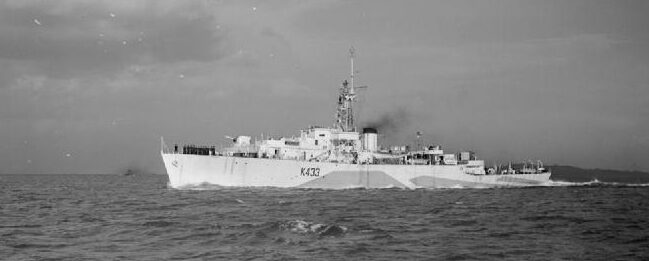
During this regional war, ships based in Singapore defended the southern border against infiltrators and saboteurs as well as taking part in local minor engagements against the Indonesian Navy. The Malay Navy was reactivated on 24 December 1948 just when the Malayan Emergency started. It was a communist-inspired insurgent war against the British colonial government. The Malayan Naval Force (MNF) was created on 4 March 1949 by British colonial authorities, based at a former RAF radio base in Woodlands. The ‘MNF Barracks’ was later renamed as an establishment, HMS Malaya. The RNVR was created as a joint force with the Singapore Division and Federation Division in 1952.
The MNF performed coastal patrols to stop communist supply lines by sea and guardded the approaches to Singapore and other ports. The flagship, a former River-class frigate (HMS Test) performed the tasks of a training ship but in 1950, the MNF included the ex-Japanese minelayer HMS Laburnum, the Landing Craft Tank HMS Pelandok, the motor fishing vessel HMS Panglima, the torpedo recovery vessel HMS Simbang and and a few seaward defence motor launches (SDML). In August 1952, Queen Elizabeth II bestowed the title “Royal Malayan Navy” to the MLN for its sterling service in the Malayan Emergency.
Secession and constitution of the Navy
On 9 August 1965, Singapore seceded from Malaysia. The island nation became an independent republic, still inside the Commonwealth. The existing naval force remained however under command of the Royal Malaysian Navy. Were present locally the KD Singapura (captured Japanese minelayer), KD Bedok (Malaysian patrol boat) and KD Panglima (former RN inshore patrol boat of 1956). RSS Panglima was recommissioned as the first proper Singaporean ship on 1 January 1966 and by 1st February, the service separated completely from Malaysian control, being renamed the Singapore Naval Volunteer Force (SNVF) with new cadres. RSS Bedok and Singapura were recommissioned. Singapura became the new navy’s floating HQ.
Also a new naval ensign was created and hoisted at Telok Ayer Basin on 5 May 1967 , marking the Navy’s official establishment and national day of rememberance. In September the became the “People’s Defence Force – Sea” (Sea Defence Command, later “Maritime Command”). There was a great deal of restructuring inside the Singapore Armed Forces at large. Maritime security was given a better place to contribute to the national security. Pulau Belakang Mati got a new HQ in 1968 and 160 naval recruits were sent to be trained in New Zealand by the RNZN, then came back with instructors in 1969 while officers were sent for the same in Australia, Britain, Canada and New Zealand.
The Maritime Command started to obtained funds and acquire new vessels in order to properly address the problem of sea robberies and smuggling and work on power projection. In June 1968 the young navy purchased six Independence-class OPVs from Britain, commissioned 1970-1972. This acquisition was initially cause by concerns of PM Harold Wilson’s announcing the withdrawal of all British forces “East of Suez” by 1971. Still a presence was maintained through the Five Power Defence Arrangements. Next was opened the Brani Naval Base in December 1974 to take charge better of the fleet’s needs, with new facilities and spaces. When terrorists from the Japanese Red Army attacked an oil complex on Pulau Bukom, hijacked the Laju ferry, RSS Sea Hawk, RSS Independence, RSS Sovereignty and RSS Daring teamed up with the Marine Police to surround the ferry and eventually assault it with success.
On 1 April 1975, the Maritime Command beame the “Republic of Singapore Navy”, a name still valid today. The reorganisation into three distinct services was consolidated.
Conway’s take on the Singaporean Navy
Singapore became internally self-governing in 1959. She had been a British possession almost uninterruptedly since 1819; first ruled by the East India Company, then controlled from India during 1826-67, and finally as the separate colony of the Straits Settlements. Britain retained control of the naval base until a final withdrawal in March 1976. Singapore joined Malaysia (formerly Federation of Malaya) when It was set up in September 1963, but pulled out following disputes and Chinese—Malay clashes in August 1965. She then set up her own armed forces, replacing expatriates with islanders, but retained links with Malaysia. Singapore is now a member of ASEAN (the Association of South East Asian Nations), which is gradually taking on aspects of a military alliance. In 1980 the Soviet Pacific Fleet lost the Singapore repair facilities it had used heavily in the 1970s, indeed more than any other foreign Asian port.
Almost all trade to and from the Far East passes the port of Singapore, giving it great strategic significance and making it one of _ the world’s major trading centres. Her spectacular economic growth is today attested by a merchant fleet of 988 ships totalling 7,664,229grt. This has assisted Singapore’s drive to self-sufficiency — most of her. warships have been built in the two specialist warship yards and she now exports warships to other navies. The country only consists of Singapore Island itself, the size of the Isle of Wight, plus a small archipelago of fifty-four other islands, but despite her small size she has a powerful and efficient force of gunand missile-armed patrol _ boats. These are well-suited to policing the restricted waters around Singapore, and coping with pirates and infiltrators, but other navies would have to be called on to cope with large-scale mining or submarines. In 1994 plans were announced to create a submanne force and a programme was begun to replace the Seawolf class FACs. In 1994 the service’s 4,000 men (2-3 year conscripts and regular volunteers) were commanded by a colonel.
Fleet modernisation
The RSN was the first regional naval power to fire a live anti-ship missile, by RSS Sea Wolf with two Gabriel in March 1974. This solidified the deterrence power of this navy as from 1975 to 1976, six Sea Wolf-class FAC/M were commissioned. They saw action in Operation Thunderstorm policing the influx of boat people fleeing from South Vietnam. The US also were contacted for support sealift operations and sold six County-class LSTs, at just one symbolic dollar each (they were nicknamed the “dollars ships”). From the US were also imported two Bluebird-class minesweepers to sweep the Singapore Strait. Another landmark was the creation of the SAF Diving Center from 1971, with frogmen trained for underwater mine disposal operations in complement. In 1975 this became the “Naval Diving Unit” transferred at Sembawang Camp.
The need for more patrols in 1975-80 led to the purchase of additional “missile gunboats” (they were too slow to the FACs) as well as starting an upgrade of her Harpoon missile (Project Albatross). But in the early 1980s budget constraints led MoD Howe Yoon Chong to concentrate on the Air Force and wanted to relegate the Navy to a coastal defence force only equipped with Oerlikon guns on towed barges as cost-saving measures. This met a lot of opposition and instead, a budget allowed to purchase twelve more capable Swift-class coastal patrol craft which replaced the missile gunboats from more tedious missions.
Still, the Navy remained the country’s lowest priority and cuts after cuts led many cadres and employee to be disillusioned with the service and leave. The next “crisis of confidence” was compounded by the absnce of a proper doctrine and critics about its inneficience at preventing illegal immigration. From 1984 the new government was convinced of the necessity to return to a more sensible force to patrol sea lines in the Malacca Strait/South China Sea as they were consubstantial with the country’s economy.
The “Navy 2000” program was initiated to tackle obsolescence and low morale, assorted by an internal restructuring. It was decided to separate police duties by the creation of a Coastal Command (COSCOM) in 1988, from the former Fleet in 1989. Between 1990 and 2001 six Victory-class missile corvettes and twelve Fearless-class patrol vessels as well as four Endurance-class LSTs (landing ship tanks) were commissioned as well as eventually the navy’s best asset, four (albeit second-hand) “Challenger-class” submarines from Sweden. This was an unprecedented expansion, and personal flocked again.
Among other the Navy was embrooiled in the Pedra Branca affair, born from a 1979 claim by Malaysia on an offshore island controlled by Singapore. In 2008 the island was awarded to Singapore by the International Court of Justice, but this was always refused by Malaysia so Singaporeans OPVs needs to keep watch in these waters, notably to protect fish resources. In January 2003, RSS Courageous collided with a merchant vessel off Pedra Branca (four casualties, ship became a total loss). Training was enhanced on navigation.
Other operations comprised the expedition of the Bedok-class mine-hunters in the Musi River to look for SilkAir Flight 185. They also took part in the International Force East Timor for the security crisis after Timor independence in 1999 and provide later humanitarian assistance to Meulaboh, Indonesia, after the 2004 Indian Ocean earthquake. Singapore also sent ships to take part to maritime security missions in the Persian Gulf, watching over Iraqi facilities.
Command structure
At its head its a Chief of Navy (CNV), reporting to the Chief of Defence Force (CDF). His domain are operational capabilities and administration in five formations:
-Fleet Command
-Maritime Security Command
-Naval Engineering and Logistics Command
-Naval Diving Unit
-Maritime Training command & Doctrine Command.
Operating forces
The Fleet’s boundaries are beyond the Singapore Strait, to conduct strikes via frigates, missile corvettes capable of AA, AS and ASW operations as well as submarines. The LSTs are added to civilian resource vessels for transportation and logistics overseas.
The Maritime Security Task Force (MSTF) ensure Singapore’s maritime security and is tasked of co-ordinating all national maritime agencies. Its boundaries are the Singapore strait.
The Naval Diving Unit is a specialized anti-mine and explosive disposal as well as underwater mine demolition tasks, but is also a default spec ops, tasked of delicate commando-type missions as an elite force.
Engineering and Logistics (NELCOM) is tasked of everything up-keeping, maintenance scheduling, equipement and assets. It is also tasked for weapons readiness checks wokking with the Defence Science and Technology Agency as well as the Singaporean Electronics center.
Training
Officers are trained and commissioned at the Officer Cadet School with other service (air and land) for better interoperablity. Midshipmen needs four weeks at sea with the fleet to learn leadership as well as navigation and basic seamanship. Graduated Officers are offered specialisation courses later at the Officers Advanced Schools (SAF Advanced School) such as the Naval Advanced Officer Course (NAOC), Mine Hunting Officer Course (MHOC), Naval Warfare Officer Course (NWOC) and Command Preparatory Programme (CPP).
Enlisted specialists and experts ratings are instructed at the Naval Military Experts Institute, Maritime Training and Doctrine Command in Changi Naval Base. Courses includes basic firefighting, damage control, handling/seamanship skills, shiphandling (ship simulator), watchkeeping as well s a final realistic Summative Exercise (SUMEX) before joining operational ships. STET Polaris since 2010 provides advanced Education and Training thanks to a “dual bridge” for two navigation teams to operate simultaneously as well as 30 trainees and instructors.
Submarine training was at first provided in Sweden by the Navy before transfer to Singapore at the newly created Submarine Training Centre RSS Challenger, Changi Naval Base. This state-of-the-art facility uses submarine simulators and an entire section for damage control training. Training in the large simulators could last several days to simulate deployments. This is a 9-month-long course with some tough tests and selection process, aside similation in the Submarine Steering and Diving Trainer and Submarine Combat Tactical Trainer, avoiding the risks and logistical costs of a true deployment sea. The SSDT is an an entire section shaped after the latest Archer-class submarine for the helmsman and diving officer. The SCTT is more focused on combat operations with four sesnors and weapons consoles also identical to the real ones. Here are monitored the skills in analysis, surveillance, command and control as well as weapons control, with various scenarios. Commanding Officers were also sent to the Royal Netherlands Navy Submarine Command Cours and Bundesmarine Submarine Commanding Officer Course. All this came in handy for the new future Invincible class submarines planned for 2024.
Training for the Naval Diving Unit starts with the toughest selection of all, starting with excellent physical coindition, eyesight and medical fitness. Trainees lands at the Frogman School, Sembawang Cam, having a vocational assessment followed by 9 weeks of basic military training, a new selection, then 20 weeks of Combat Diver Course with theory and drown proofing, pool competency, survival skills.
Cold War Singaporean Ships
 Seawolf class FACs
Seawolf class FACs

The SEA WOLF class fast attack craft class comprised RSS Sea Wolf (P 76), Sea Lion (P 77), Sea Dragon (P 78), Sea Tiger (P 79), Sea Hawk (P 80), Sea Scorpion (P 81).
Six Lürssen TNC 45 FACs ordered in 1970. Apart from machinery and armament they are similar to those supplied since to the Gulf navies. Armed with the first Gabriel SSMs to be exported. Sea Dragon, Sea Hawk, Sea Scorpton and Sea Tiger all built at Singapore with assistance from Lürssen. First pair commissioned 1974, next pair 1975 and the final two in 1977. Re-equipped with Harpoon SSMs and new electronics 1985—92, still in service by the 2000s.
Armament: 5 Gabriel SSM (1 x 3, 2 x 1), 1-57mm (504rds), 140mm/70 (1008 rds), 2 RFL on 57mm. They shared caracteristics with the Bahrain and Kuwait particulars.
 Independence class FAC
Independence class FAC
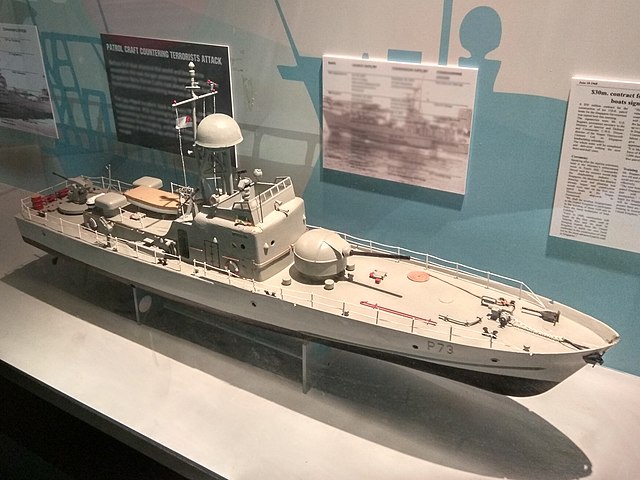
Vosper 110ft Type A and B fast attack craft: Independence (P 69, 15.7.69), Freedom (P 70, 18.11.69), Sovereignty (P 71, 25.11.69), Fustice (P 72, 20.6.70), Daring (P 73, 1970), Dauntless (P 74, 6.5.71)
Six Vosper Thornycroft 110ft patrol boats were ordered on 21 May 1968. Three have a 40mm gun forward (Type A) and three a 76mm set further aft and a shorter superstructure (Type B). Type B also have Signaal M 26 Radome atop the short lattice mast. Steel hull and aluminium alloy superstructure, developed from the Malaysian 103ft type. First unit of each type built at Vosper Thornycroft’s Portsmouth Yard; Independence, ‘Vype A, delivered 8 July 1970, and Sovereignty, Type B, delivered February 1970, Remainder built at Vosper Thornycroft’s Singapore yard; I“reedom and Justice (Lype A) delivered 11 January 1971 and 23 April 1971 respectively, and Daring and Dauntless (Type B) delivered September and December 1971 respectively. All extant 1995, but are to be replaced by Fearless class.
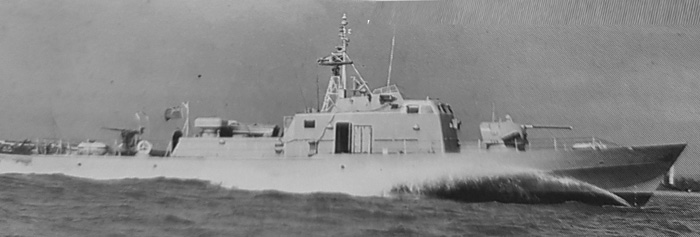
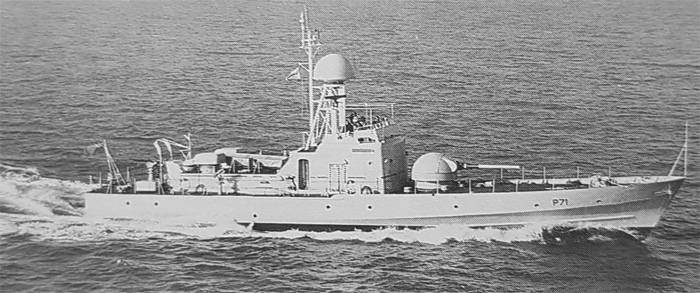
Type A Independence (top), Type B Sovereignty
Specs:
Displacement: 100t standard; 130t full load
Dimensions: 103ft 8in wl, 109ft 8in oa x 21ft x 5ft 8in (31.6m/33.5m x 6.4m x 1.8m)
Machinery: 2 shafts, 2 MTU 16V 38 diesels, 7200hp = 32kts.
Range 1100nm at 15kts
Armament: Type A: 140mm/70, 1-20mm Type B: 1-76mm70, 1-20mm
Sensors: Type A: Radar Decca TM 626 Type B: Radar HSA M 26, Decca TM 626
Complement: Type A: 22 Type B: 19
 FPB 57 class FAC (1982)
FPB 57 class FAC (1982)
Lürssen FPB 57 (1981) fast attack craft, which particulars are the same as Kuwait boats ordered in 1980 from Singapore SB in Jurong. First laid down June 1980.
Armament of a single 76mm OTO Melara (300rds) and twin 35mm Oerlikon GDM-A A (2,750rds), possibly SSM as well. Sensors: Susie-1 passive intercept ESM. Three more built for export. Roughly Similar to German Type 143 (S 61) class.
 Panglia OPV (tr. 1963)
Panglia OPV (tr. 1963)
British ‘FORD’ type large patrol boat Panglima (P 68) was built at United Engineers, Singapore and launched on 14 January 1956 to the design of the British ‘Ford’ class seaward defence boats but with 1-20mm and fifteen crew. Commissioned May 1956, transferred to Royal Malaysian Navy in 1963 when Federation formed. Returned to Singapore 1967 and now used as TS.
 Endavour (P75) 1970
Endavour (P75) 1970
ENDEAVOUR large patrol craft: P 75 was built by Schiffswerft Oberwinter, Western Germany, 1955, purchased from the Netherlands on 30 September 1970. Used as TS and diving tender. Long discarded.
Specs:
Displacement: 250t full load
Dimensions: 135ft x 25ft x 8ft 40.9m x 7.6m x 2.4m
Machinery: 2 shafts, 2 Maybach diesels, 2600bhp = 20kts.
Range 800nm at 8kts
Armament: 2 20mm (2 x 1)
Complement: 24
 Jupiter class (MSC type 1975)
Jupiter class (MSC type 1975)
Ex-US MSC type minesweepers: Fupuer (M 101, exWhippoorwill), Mercury (M 102, ex-Thrasher)
Former US coastal minesweepers built in 1955 and acquired by Singapore in 1975. Rearmed with new 20mm in 1980. Relegated to auxiliary dunes. Jupiter discarded 1990, Mercury extant 1995.
 Swift class FPC (1980)
Swift class FPC (1980)
Twelve “Swift” class fast patro] craft: 45t, 34kts, 1x 20mm, 1x 7,62 mm LMG, crew: 13. P10-P21 built 1980-81 by Singapore SB, Jurong, based on Australian De Havilland ‘Capricornia’ design. All formally commissioned 20 October 1981. Operated by Singapore Marine Police.
 Vosper “PX” class FPC (1968)
Vosper “PX” class FPC (1968)
Four Vosper ‘PX’ type coastal patrol craft: In service since 1969, Twenty PC 32 class speedboats in service since 1978-79 and nineteen larger craft (PX 14-33) building at Sembawang SY.
 Endurance class LSTs (1971)
Endurance class LSTs (1971)
Ex-US LST 542 type tank landing ships: RSS Endurance (L. 201, ex-Holmes County, LST 836), RSS Excellence (L 202, ex-LST 629), Intrepid (L. 203, ex-LST 759), RSS Perseverance (i) (L 206, ex-LST 623), RSS Persistence (L. 205, ex-LST 613), RSS Resolution (L204, ex-LST 649)
Nine ex-US LSTs, all 1944-built, were acquired by Singapore, but three were sold without entering naval service. Endurance was loaned from the USN on 1 July 1971 and purchased on 5 December 1975. Ex-USS LST 276 and LST 532 were transferred in June 1974 but were sold commercially. The other six were originally numbered A 81 to A 86. Endurance has been leased commercially since 1976. Excellence, Intrepid (only a stern 40mm gun each, former has helicopter pad) and Resolution were rebuilt in 1977 with a derrick forward of the bridge and a pole mast in place of the lattice mast. Perseverance (i), Persistence and Resolution discarded 1992. Remainder extant 1995.
 RSS Perseverance LST (1989)
RSS Perseverance LST (1989)
Former LANCELOT class tank landing ship RSS Perseverance (it) (ex-Lowland Lancer, ex-Sir Lancelot 21.11.92). This former RN logistic ship was sold commercially in 1989 and converted to car ferry. It was bought by the Nay in October 1992 and converted back to military use.
 Ayr Chawan class LCs (1968)
Ayr Chawan class LCs (1968)
The AYR CHAWAN class landing craft comprised RSS Ayr Chawan, Ayer Merban and two others.
They were built by Vosper Thornycroft Yard in Singapore in 1968-69, still in service by the late 1990s.
Specs:
Displacement: 150t full load
Dimensions: 88ft 6in x 22ft x 4ft 27.0m x 6.9m x 1.3m
Machinery: 2 shafts, 2 diesels, 650bhp = 10kts
Armament: None
 Brani class LCU (1955)
Brani class LCU (1955)
These were two MINOR LANDING CRAFT, to be exact of the LCU type. HMAS Brant and Berlayer, built in Australia 1955-56, stricken c1991.
Specs: 56t full load, 55ft 8in x 14ft x 4ft 1in, 17m x 4.3m x 1.4m, 2 diesels, 460bhp = 9kts.
The modern Singaporean Navy
Reorganization
The Coastal Command was reorganized in 2009, into the “Maritime Security Task Force” in order to reach better inter-service coordination as well as with the Police Coast Guard and harbour authorities. From 2007 and until 2020, the RSN introduced a new range of assets:
-Archer-class submarines
-Formidable-class frigates
-Independence-class littoral mission vessels
-Unmanned AVs: Marine Craft patrol boat, Protector USV. This is partly due to falling birthrates, something common among developed asian countries (and round the world).
The Navy was restructured again in June 2020 with the squadrons dissolved and regrouped as separate flotilla. The Maritime Security Task Force was restructured as well and the Sea Security Group and Force Protection Group were created. New procurement plans were also launched.
Recent Operations
The RSN took part in many multilateral anti-piracy operations, close to home at the Malacca Strait but also in the Gulf of Aden and Horn of Africa under TF 151, even taking command of the task force three times. The Sin,gaporean Navy aslo took part in the search for MH Flight 370 in the Gulf of Thailand as well as QZ Flight 8501 in the Karimata Strait in 2014 thankjs to its sinar equipped vessels; Humanitarian actions followed to Typhoon Haiyan in 2013, providing notably a platform to restore communication and ensure local command and control for operations.
The Navy had its 50th anniversary in 2017, hosting its first international fleet review. 20 nations participated.
In October 2018, Malaysia extended its Johor Bahru port limits, in support of 1979 maritime claims in the Tuas sector, also claimed by Singapore, so the latter extended its port limits, overlapping with Malaysia’s own, which led Malaysia to deploy its Coast Guard and government ships, trying to enforce these claims and forcing Singapore to sent its Police Coast Guard there to patrol 24/7 until successful negotiations led to a de-escalation of the confrontation.
 Formidable class Frigates (2007)
Formidable class Frigates (2007)
Class: RSS Formidable, Intrepid, Steadfast, Tenacious, Stalwart, Supreme
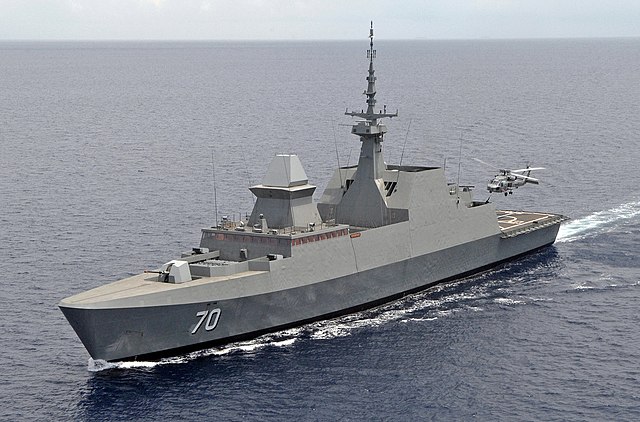
The Formidable-class multi-role stealth frigates were derivative of the French Navy’s 1990 La Fayette-class, six ships in all, forming the First Flotilla.
They entered service in 2007 and completely tailored for the needs of the Singaporean Navy. Their acquisition followed a successful export already of the type to Taiwan. Given their level of automation and systems at the time, pushiong the boundaries of the basic Lafayette design, they were saluted by the press as the “most advanced surface combatants in Southeast Asia”. Their unique special SAM configuration combines the latest Thales Herakles radar with the Sylver A50 launcher plus shorter ranged MBDA Aster 15 and 30 missiles. SSMs are the Boeing Harpoon missiles and for coastal bombardment and close defence an OTO Melara 76 mm gun. The Harpoon are secheduled for replacement by the Blue Spear SSM as part of their mid-life upgrade program.
ASW is enhanced by two Sikorsky S-70B naval helicopters (close to the SH-60B Seahawk) also enabling over the horizon surveillance and targeting for on board SSMs. These are part of the 123 squadron RSAF under command of the air force. RSS Formidable was built in DCNS Lorient (now naval group), France, commissioned on 5 May 2007 for the 40th anniversary of the RSN and the first modern missile frigates of the country. The remainder was built locally at ST Engineering, with French assistance. Mid-life upgrades were announced in 2023 with a contract to proceed on all six vessels until 2028.
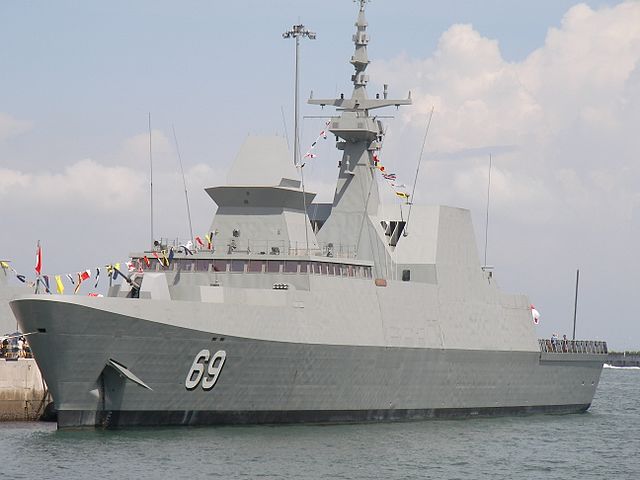
Specs:
Displacement: 3,200 tonnes (3,150 long tons; 3,530 short tons)
Dimensions: 114.8 x 16.3 x 6 m (376 ft 8 in x 53 ft 6 in x 19 ft 8 in)
Propulsion: CODAD, 4× diesel generator, 4× MTU diesels, 36,400 kW (48,800 shp)
Speed: 27 knots (50.0 km/h; 31.1 mph), 18 kn (33.3 km/h; 20.7 mph) cruising
Range: 4,200 nautical miles (7,780 km)
Complement: 71 excluding air crew (19)
Sensors: Herakles SAR, FCS Thales STING EO Mk2, Terma Scanter 2001 NavR, sonar EDO 980 ALOFTS
Protection: ESM: RAFAEL C-PEARL-M, 3x Sagem Dagaie CL, 2x Leonardo Finmeccanica Morpheus WASS C310
Armament: 24 RGM-84C Harpoon SSM, 2×8 Sylver A50 VLS, 2×8 Sylver A43, 2× B515 TTs EuroTorp A244/S Mod 3, Oto Melara 76mm Super Rapido gun, 4× STK 50MG 12.7 mm HMG, 2× 25mm Mk 38 Mod2 Typhoon WPSG, LRAD500X.
One S-70B Seahawk, Flight deck and enclosed hangar (2 helicopters).
 Victory class Corvettes (1990)
Victory class Corvettes (1990)
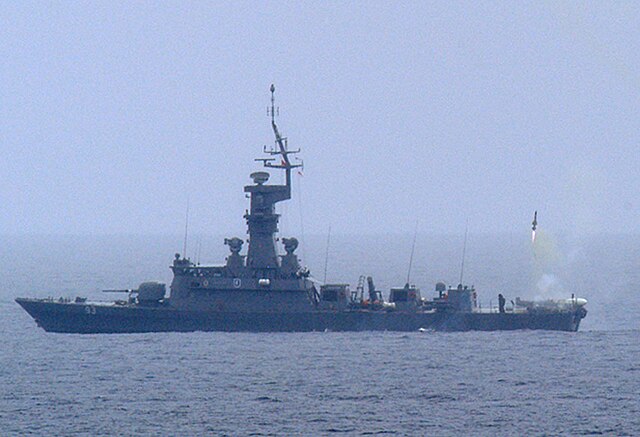
The VICTORY class missile corvettes comprised the RSS Victory (P 88, 18.8.90), Valour (P 89, 18.8.90), Vigilance (P 90, 18.8.90), Vahtant (P 91, 25.5.91), Vigour (P 92, 25.5.91), and Vengeance (P 93, 25.5.91).
They were a variant of Lürssen’s MGB 62 design (see Bahrain) but with different electronics and weapons. Design has not proved successful because of excessive topweight. The big mast, similar to that on the Israeli Hertz class, holds Israeli EW equipment. It may be replaced by two lighter masts to solve topweight and windage problems. Barak 2 VLS installed in 1994.
Specs:
Displacement: 550t normal; 600r full load
Dimensions: 196ft 6in pp, 206ft 6in oa x 30ft 6in x 8ft 6in 59.9m, 62.95m x 2.6m
Machinery: 4-shaft, 4 MTU 20V538 98 diesels = 35kts
Armament: 8 AGM-84 Harpoon SSM, | Barak 2 VLS (32 missiles), 1-76mm L/62 OTO Melara, 4-12.7?mm (4x 1), 6 324mm ILAS-3 ASW TT
Sensors: Radar Sea Giraffe 150HC, Type 1007; sonar Salinon VDS
Complement: 49
 Independence class Corvettes (2020)
Independence class Corvettes (2020)
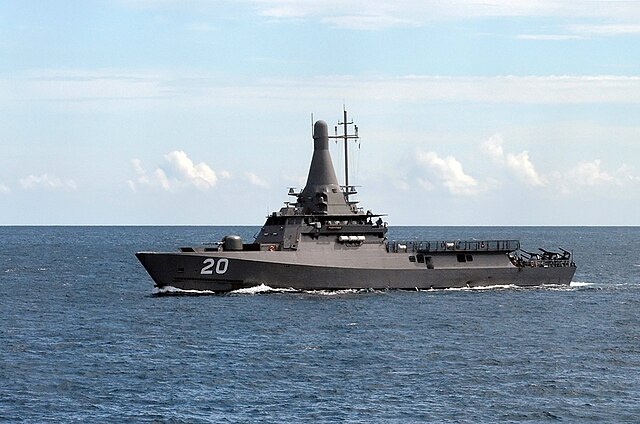
The Independence-class littoral mission vessel are eight replacement for the Fearless class. In January 2013, the MoD awarded ST Engineering a contract for thisn with ST Marine building them at Benoi Yard, integrating the combat systems from ST Electronics. They are highy automated, using the “lean manning” concept as per the local declining birthrate, and relies heavily on remote monitoring systems in a comprehensive combat information center to als monitor the machinery control room and bridge co-located in a single space class the integrated command center. The ship can deployed UAVs, drones, or standard containers to be reconfigured to support disaster-relief operations. The three ships were commissioned in January 2020 and wetn from the 182 Squadron (June 2020) with the Maritime Security Command, then Second Flotilla.
 Fearless class FAC (1994)
Fearless class FAC (1994)
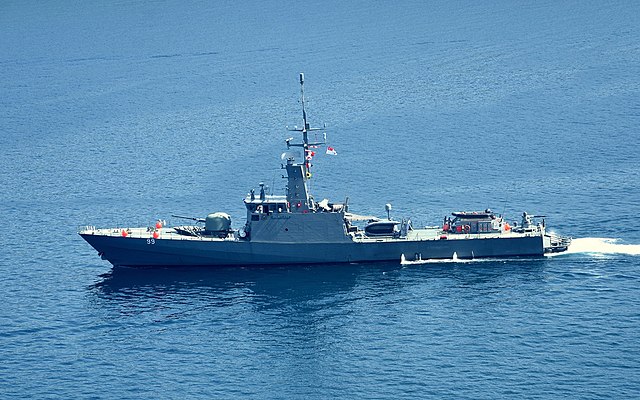
Class: Resilience, Unity, Sovereignty, Justice, Freedom, Independence, Fearless, Brave, Courageous, Gallant, Daring, Dauntless.
Precedessors of the Independence class: Six missile-armed FACs ordered in 1994, first of class building at Singapore SB, Jurong. Originally designed with the dimensions of 147ft 8in wl, 180ft 5in oa (45/55m) long and armed with four 6 Gabriel SSM, 1-76mm L/62, 6—324mm ILAS-3 ASW TT. The first six were called APVs (antisubmarine patrol vessels), next six OPVs (offshore patrol vessels) and the latter were originally scheduled tpo carry six Gabriel II SSMs instead of TTs but were completed without. They also carried inspection RIB aft. Current status: All stricken 2017-2020 apart Courageous lost in a collision in 2003.
Specs:
Displacement: 500t
Dimensions: 50.8 pp/55 oa x 8.6 x 2.7 max
poerplant: 2 shafts & 2 waterjets 2 MTU 12V595 TE90 diesels 8,570 hp: 23 kts
Range 1800 nm/15 kts
Armament: twin Simbad SAM (12 Mistral), single 76mm/62 OTO-Melara Compatto SR, 4x 12.7mm/90 HMG, 2×3 -324mm ILAS-3 TT (A-244S).
Sensors: Type 1007, EL/M-2228X radars, 2x MSIS e/o systems, Gudgeon TSM 2362 sonar, NS-9010C ECM suite, 2x Shield III decoy RL, ICSS ST-3100 CCS
Complement: 27
 Bedok class minehunter (1994)
Bedok class minehunter (1994)
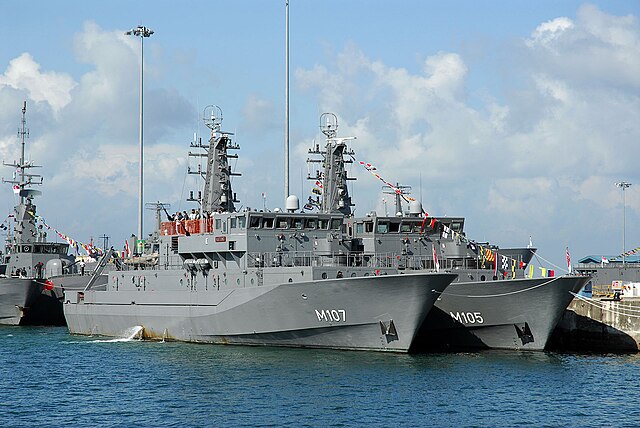
BEDOK class minehunters: Class: Bedok (M 105, 1994), Kalaw (M 106, 1995), Karang (M 107, 1995), Prangel (M 108, 1996)
Original order for two modified Landsat type from Karlskronavary et, Sweden made in April 1994, followed by an order for a further two. M108 left Sweden on 17 August 1993 as deck cargo. Remainder fitted out at Singapore SB.
Specs:
Displacement: 310t normal; 360t full load
Dimensions: 147ft 8in wl, 155ft 10in oa x 31ft 6in x 7ft 6in (45/47.5m x 9.6m x 2.30m)
Machinery: 2 shafts, 2 Saab-Scania diesels, 1440bhp = 15kts
Armament: -40mm/70 Bofors, 2x 7.62mm MG
Sensors: Radar WM 20; sonar TSM 2002
Complement: 39
 Type 206 submarines (1994)
Type 206 submarines (1994)
Late in 1994, the Ministry of Defence announced that it hopes to acquire up to six redundant Type 206 diesels-electric submarines. To be undoubtedly be upgraded to Type 206A or similar standard before being recommissioned. However the program was cancelled and transformed itself in the 2000s into the adoption of the Type 216 instead (see later).
 Foxtrot class (1995)
Foxtrot class (1995)
An ex-Indian “FOXTROT” class submarine (Project 641) was to be loaned back in 1994 as part of the preparations for establishing a submarine force the Singaporean Navy. The question of leasing or buying a Russian-built “Foxtrot” from the Indian Navy was raised again in 1995. However nothing came out of it.
 Challenger class subs (1996)
Challenger class subs (1996)
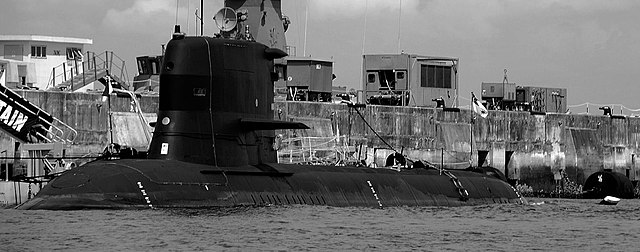
Class:
-Chieftain (ex-Sjöhunden) from Kockums, Malmö (1968) transferred 4.1996, in service as of 2019.
-Challenger (ex-Sjöbjörnen) from Örlogsvarv Karlskrona (1968) transferred 28.5.1999, stricken March 2015.
-Centurion (ex-Sjöormen) from Kockums, Malmö (1967) transferred 28.5.1999, stricken march 2015.
-Conqueror (ex-Sjölejonet) from Kockums, Malmö (1967) transferred 28.5.1999, in service as of 2019.
Contract was announced in 1995 in replacement of both the Foxtrot and Type 206. Transfer was validated by April 1996, for training Singaporean submariners in Swedish waters. Rhey were all four refitted at Karlskrona until September 1997 until 2003. Three more were ordered on 31 July 1997, officially transferred on 28 May 1999 after refit and modifications such as a new digital CCS. Conqueror was recommissioned 2.7.2000, Chieftain recommissioned 25.8.2002, Challenger and Centurion recom. in January 2004. They were all retired in 2015 or late 2024 for the last two, now over 50 years old.
 Archer class subs (2009)
Archer class subs (2009)
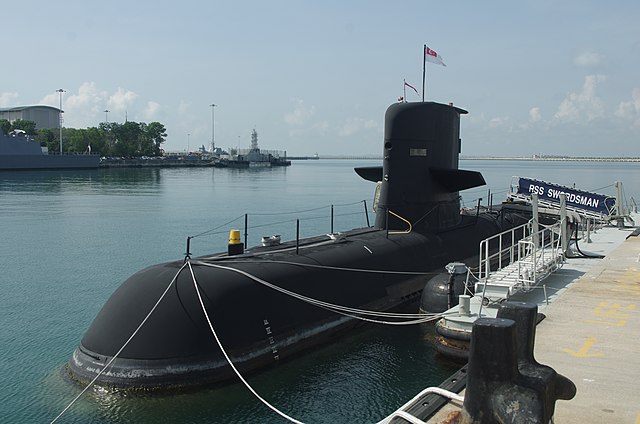
The Archer-class submarines were former Swedish boats, the Västergötland class. In November 2005, a contract was signed with Kockums for their tropicalisation and during the refit, an air independent propulsion (AIP) system was also installed. The hull for this was cut out and separated to insert a new section. RSS Archer was relaunched on 16 June 2009, recommissioned on 2 December 2011, RSS Swordsman recommissioned on 30 April 2013. Not only the AIP procured extra underwater range but also lowered the noise signature. The improved sonar system is capable of further detection distance and the torpedo system is also upgrade with a better target acquisition capability to match the sonar range. There was a further upgrade in 2016-2019, with the addition of CM010 optronic periscopes, a new dgital combat management, upgraded sonar and countermeasure.
 Invincible class subs
Invincible class subs
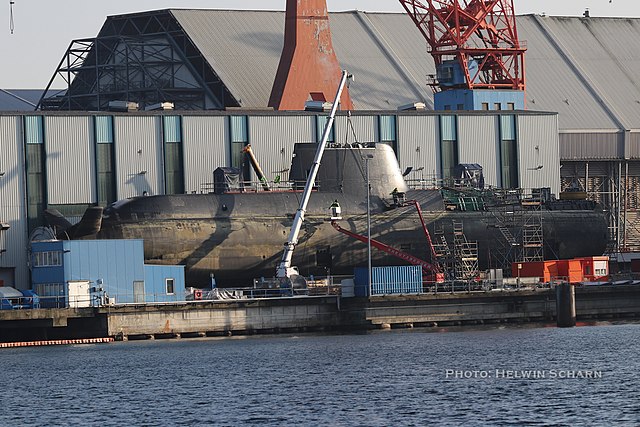
The Invincible class are the German export Type 218SG, the last letters standing for Singapore. The class was ordered from ThyssenKrupp Marine Systems, procured in November 2013 and May 2017 at one billion Euros apiece, six years completion, first delivered 2020. Invincible was followed by RSS Impeccable and RSS Illustrious, launched on 13 December 2022 with a commission reported in 2023, operationalisation for 2024. The 4th, RSS Inimitable is still under construction with an unnamed, undsiclosed possible 5th.
Although diesel electric subs, they have 50% longer endurance and firepower, sensors, automation than previous RSN submarines, with eight torpedo tubes a crew of 28, 15 knots submerged with an AIP.

RSS Invincible was launched on 18 February 2019, had sea trials in Germany before commission on 2022; RSS Impeccable and RSS Illustrious were launched on 13 December 2022, delivered 2023 and last by 2024. They form with the four Archer class the 7th Flotilla RSN, with an attached submarine support and rescue vessel, MV Swift Rescue.
 Sentinel class OPVs
Sentinel class OPVs
Class: MSRV Sentinel, MSRV Guardian, MSRV Protector and MSRV Bastion
The Sentinel-class maritime security and response vessels (MSRV) are four refurbished Fearless-class patrol vessels, announced in March 2020 due to the increase of sea robberies and foreign intrusions in Singapore’s territorial waters. They were given non-lethal LRAD and laser warning systems and fenders into the hull to enable quicker boardings of suspicious vessels. The bridge was reinforced with ballistic-resistant armour. The first two were commissioned on 26 January 2021, the latter two on 20 January 2022. The same flotilla will also operate two Maritime Security Tugboats (MSRTs) and other ships FY2026.
 Multi-role Combat Vessels Program
Multi-role Combat Vessels Program
Contract for the procurement for six multi-role combat vessels (MRCV) was signed between ST Engineering Marine Ltd and SAAB on 28 March 2023[63] while procurements plans for the drone-laden Joint Multi-Mission Ships (JMSS) are ongoing. The MRCVs will act as a ‘mothership’ for unmanned assets and host mine-countermeasure Venus-16 USVs,[52] while the JMSS will increase the RSN’s aviation capabilities in supporting disaster relief operations.[64][65] A new class of patrol vessels to operate alongside the existing littoral mission vessels are to enter service in 2026.[66][67]
Read More/Src
Books
A Maritime Force for a Maritime Nation: Celebrating 50 Years of the Navy. Straits Times Press. 2017.
Onwards and Upwards: Celebrating 40 Years of the Navy. SNP International Publishing. 2007.
Lee Kuan Yew: Hard Truths to Keep Singapore Going. Straits Times Press. February 2011.
Links
On businessinsider.com/
https://en.wikipedia.org/wiki/Republic_of_Singapore_Navy
https://web.archive.org/web/20200607162253/https://www.mindef.gov.sg/oms/navy/Our_Mission.HTM
https://www.straitstimes.com/singapore/commercially-operated-ship-arrives-to-support-armed-forces-navy-training
https://nationalinterest.org/blog/buzz/why-singapores-navy-should-be-taken-seriously-80361/
Indian Ocean Rising: Maritime Security and Policy Challenges Couverture Rupert Herbert-Burns, Caitlyn Antrim, Halae Fuller, Lindsay Dolan
archive.org navypedia.org/ singapore
https://www.straitstimes.com/singapore/drop-in-piracy-in-regional-waters
https://www.straitstimes.com/singapore/piracy-attempt-foiled-by-spore-indonesian-navies
https://www.todayonline.com/singapore/busy-shipping-lanes-narrow-passageway-hard-vessels-navigate
https://www.mindef.gov.sg/home
https://web.archive.org/web/20230404140027/http://rmncomms.webs.com/history.htm
https://web.archive.org/web/20240622074107/https://www.mindef.gov.sg/web/portal/navy/about/history-and-heritage/
sigapore, country study – books.google.com
https://en.wikipedia.org/wiki/Republic_of_Singapore_Air_Force
https://www.helion.co.uk/conflicts/malayan-emergency.php

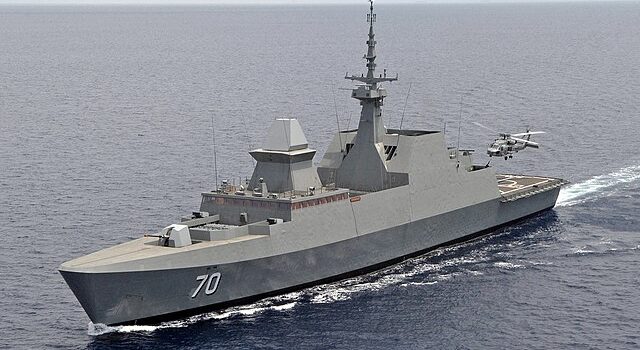
 Latest Facebook Entry -
Latest Facebook Entry -  X(Tweeter) Naval Encyclopedia's deck archive
X(Tweeter) Naval Encyclopedia's deck archive Instagram (@navalencyc)
Instagram (@navalencyc)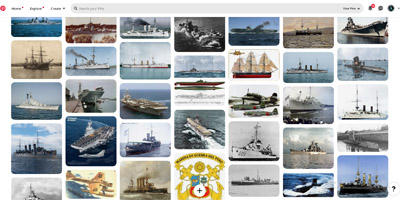

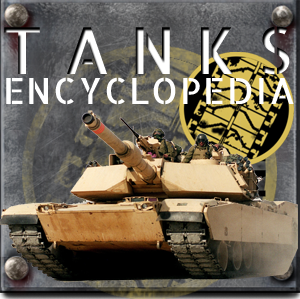
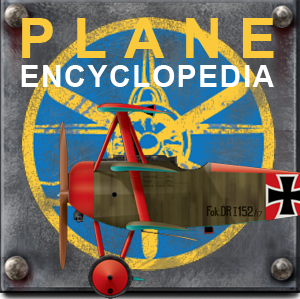
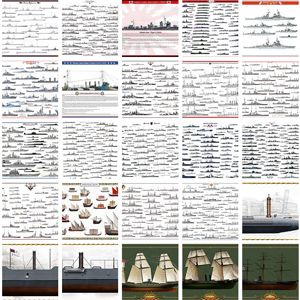
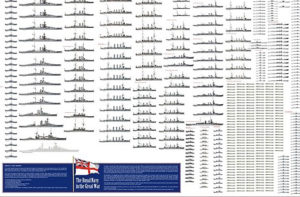
 French Navy
French Navy Royal Navy
Royal Navy Russian Navy
Russian Navy Armada Espanola
Armada Espanola Austrian Navy
Austrian Navy K.u.K. Kriegsmarine
K.u.K. Kriegsmarine Dansk Marine
Dansk Marine Nautiko Hellenon
Nautiko Hellenon Koninklije Marine 1870
Koninklije Marine 1870 Marinha do Brasil
Marinha do Brasil Osmanlı Donanması
Osmanlı Donanması Marina Do Peru
Marina Do Peru Marinha do Portugal
Marinha do Portugal Regia Marina 1870
Regia Marina 1870 Nihhon Kaigun 1870
Nihhon Kaigun 1870 Preußische Marine 1870
Preußische Marine 1870 Russkiy Flot 1870
Russkiy Flot 1870 Svenska marinen
Svenska marinen Søværnet
Søværnet Union Navy
Union Navy Confederate Navy
Confederate Navy Armada de Argentina
Armada de Argentina Imperial Chinese Navy
Imperial Chinese Navy Marinha do Portugal
Marinha do Portugal Mexico
Mexico Kaiserliche Marine
Kaiserliche Marine 1898 US Navy
1898 US Navy Sovietskiy Flot
Sovietskiy Flot Royal Canadian Navy
Royal Canadian Navy Royal Australian Navy
Royal Australian Navy RNZN Fleet
RNZN Fleet Chinese Navy 1937
Chinese Navy 1937 Kriegsmarine
Kriegsmarine Chilean Navy
Chilean Navy Danish Navy
Danish Navy Finnish Navy
Finnish Navy Hellenic Navy
Hellenic Navy Polish Navy
Polish Navy Romanian Navy
Romanian Navy Turkish Navy
Turkish Navy Royal Yugoslav Navy
Royal Yugoslav Navy Royal Thai Navy
Royal Thai Navy Minor Navies
Minor Navies Albania
Albania Austria
Austria Belgium
Belgium Columbia
Columbia Costa Rica
Costa Rica Cuba
Cuba Czechoslovakia
Czechoslovakia Dominican Republic
Dominican Republic Haiti
Haiti Hungary
Hungary Honduras
Honduras Estonia
Estonia Iceland
Iceland Eire
Eire Equador
Equador Iran
Iran Iraq
Iraq Latvia
Latvia Liberia
Liberia Lithuania
Lithuania Mandchukuo
Mandchukuo Morocco
Morocco Nicaragua
Nicaragua Persia
Persia San Salvador
San Salvador Sarawak
Sarawak Uruguay
Uruguay Venezuela
Venezuela Zanzibar
Zanzibar Warsaw Pact Navies
Warsaw Pact Navies Bulgaria
Bulgaria Hungary
Hungary

 Bundesmarine
Bundesmarine Dutch Navy
Dutch Navy Hellenic Navy
Hellenic Navy Marina Militare
Marina Militare Yugoslav Navy
Yugoslav Navy Chinese Navy
Chinese Navy Indian Navy
Indian Navy Indonesian Navy
Indonesian Navy JMSDF
JMSDF North Korean Navy
North Korean Navy Pakistani Navy
Pakistani Navy Philippines Navy
Philippines Navy ROKN
ROKN Rep. of Singapore Navy
Rep. of Singapore Navy Taiwanese Navy
Taiwanese Navy IDF Navy
IDF Navy Saudi Navy
Saudi Navy Royal New Zealand Navy
Royal New Zealand Navy Egyptian Navy
Egyptian Navy South African Navy
South African Navy






























 Ukrainian Navy
Ukrainian Navy dbodesign
dbodesign